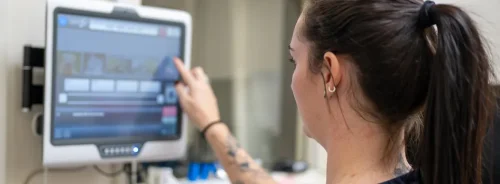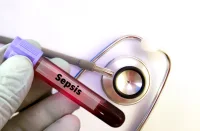Sepsis affects over 1.7 million people annually in the U.S., causing more than 350,000 deaths and over $62 billion in healthcare costs. The 2021 Surviving Sepsis Campaign (SSC) guidelines recommend antibiotic timing based on illness severity and sepsis probability, creating four risk categories, but this classification is subjective and often debated by physicians.
The SSC strongly advises administering antibiotics within 1 hour for probable/definite sepsis or shock, and within 3 hours for possible sepsis. However, evidence supporting the benefit of rapid antibiotics in patients without shock is limited. Because identifying sepsis and predicting shock development is challenging, no objective tool currently exists.
A new study applied two deep learning models to categorise patients into four risk groups (sepsis probability and shock risk) and examined how antibiotic timing in these groups relates to short-term mortality, hypothesising that mortality outcomes vary with timing across risk categories.
The study analysed patient data from two large health systems (2016–2024). At clinical suspicion of sepsis, two deep learning models objectively stratified patients into four risk groups, based on likelihood of sepsis and shock development, mirroring SSC categories. The primary outcome measured was short-term mortality, defined as in-hospital death or transition to hospice, across these risk groups.
The study included 34,087 adult patients with potential sepsis. At the development site, mortality rates and median times to antibiotics for the four risk groups were: (1) 23.2% mortality, 1.7 hours to antibiotics; (2) 17.7%, 3.0 hours; (3) 5.0%, 2.8 hours; and (4) 1.9%, 4.6 hours. Similar results were seen at the validation site. For patients with possible sepsis unlikely to develop shock, mortality did not differ based on antibiotic timing. However, for patients with probable sepsis, regardless of shock risk, receiving antibiotics within one hour significantly reduced mortality.
This study yielded two key findings. Two deep learning (DL) models can objectively stratify patients by their likelihood of having sepsis and risk of developing shock, mirroring Surviving Sepsis Campaign (SSC) risk groups. For many patients, especially those with possible sepsis, adhering strictly to SSC’s antibiotic timing recommendations may not improve short-term mortality.
About 40% of patients were classified as possible sepsis unlikely to develop shock, with few progressing to sepsis, and their outcomes were minimally affected by antibiotic timing. Conversely, a high-risk group with probable sepsis and high shock risk, which has been understudied, showed significantly higher mortality and uncertain optimal treatment strategies. These patients might benefit from ICU admission, close monitoring, and targeted therapies. The study confirmed that administering antibiotics within one hour for probable sepsis reduces mortality, supporting SSC guidelines.
Unlike previous methods, these DL models provide objective, reproducible risk stratification in real-time clinical settings, potentially aiding antimicrobial stewardship and clinical decision-making. However, more validation across diverse institutions and settings is needed before widespread use.
The study also highlights concerns about rigid antibiotic timing for possible sepsis without shock, citing potential overtreatment, antibiotic resistance, and lack of evidence supporting strict 3-hour windows. Around 75–89% of patients unlikely to develop sepsis still received antibiotics, suggesting room for more judicious use and delayed diagnostics in this group.
Source: Critical Care
Image Credit: iStock










